SEASPINE SPIN-OFF INFORMATION
Certain statements contained herein that are not historical in nature are “forward-looking” statements within the meaning of the Private Securities Litigation Reform Act of 1995. Forward-looking statements include, but are not limited to: expectations regarding each company’s future valuation; plans for executing the spin-off (including the costs related thereto); the benefits of the spin-off and change in Integra’s structure to our shareholders and to each company; the taxable nature of the spin-off; the future prospects of each company as an independent company; statements concerning each company’s future financing plans or financial performance, including projections for revenues, market growth, adjusted EBITDA, adjusted margins, adjusted earnings per share, non-GAAP adjustments such as global enterprise resource planning system implementation charges, acquisition-related charges, goodwill and other intangible asset impairment charges, non-cash amortization of imputed interest for convertible debt, intangible asset amortization and income tax expense (benefit) related to non-GAAP adjustments. Such forward-looking statements involve risks and uncertainties that could cause actual results to differ materially from predicted or expected results. Such risks and uncertainties include: each company’s ability to respond to changes in its end markets that could affect demand for its products; the ability to achieve anticipated growth rates, revenues, margins and scale and to execute on each company’s strategy generally; unanticipated changes in business relationships with customers or their purchases from each company; general economic and business conditions, both nationally and internationally; uncertainties that may delay or negatively impact the spin-off or cause the spin-off to not occur; uncertainties related to each company’s ability to realize the anticipated benefits of the spin-off, including new focus and anticipated growth; Integra’s inability to realize the benefits of a simplified structure; the inability to establish or maintain certain business relationships between both companies; disruptions to operations as a result of effecting the spin-off; demand for and market acceptance of new and existing products; future actions of regulatory bodies and other governmental authorities, including the FDA and foreign counterparts; timely submission and approval of regulatory filings; the ability to timely file and secure regulatory approval for products in development, including each company’s ability to comply with and obtain approvals for products of human origin and comply with recently enacted regulations regarding products containing materials derived from animal sources; product quality or patient safety concerns leading to product recalls, withdrawals, launch delays, litigation or declining sales; U.S. healthcare reform and other global austerity measures; reimbursement and rebate policies of government agencies and private payors; product development risks; additional indications and therapeutic applications for medical products, biologics and medical devices; inventory reductions or fluctuations in buying patterns; the availability of acceptable raw materials and component supply, and dependence on a limited number of third-party suppliers; the ability of each company to protect its intellectual property, including unpatented trade secrets, and to operate without infringing or misappropriating the proprietary rights of others; anticipated demand for each company’s products and each company’s ability to manufacture and ship sufficient quantities of its products to meet demand; each company’s ability to maintain and expand its marketing and sales networks; the ability to achieve satisfactory operating results in the integration of acquired companies; the ability to maintain relationships with customers of acquired entities; the impact of goodwill and other intangible asset impairment charges if future operating results of acquired businesses are significantly less than the results anticipated at the time of the acquisitions; physicians’ willingness to adopt each company’s recently launched and planned products, customers’ continued willingness to pay for each company’s products and third-party payors’ willingness to provide or continue reimbursement for each company’s products; initiatives launched by each company’s competitors; downward pricing pressure from competitors or hospitals and changes in third-party payment systems; each company’s ability to remediate quality systems violations; difficulties in controlling expenses, including costs to procure and manufacture products; the impact of changes in management or staff levels; the geographic distribution of where each company generates its taxable income; the effect of legislation effecting healthcare reform in the United States and internationally; fluctuations in foreign currency exchange rates; and the amount of Integra’s convertible notes and bank borrowings outstanding and other factors influencing liquidity. Additional factors are discussed in Integra’s filings with the Securities and Exchange Commission, including Integra’s Annual Report on Form 10-K for the year ended December 31, 2014, quarterly reports on Form 10-Q and current reports on Form 8-K, and in SeaSpine’s Form 10 Registration Statement. These forward-looking statements are made only as of the date hereof and, except as required by the federal securities laws, Integra undertakes no obligation to publicly update or revise any forward-looking statement, whether as a result of new information, future events or otherwise.
Certain non-GAAP financial measures are disclosed in this presentation. A reconciliation of these non-GAAP financial measures is available on the investor section of our website.


